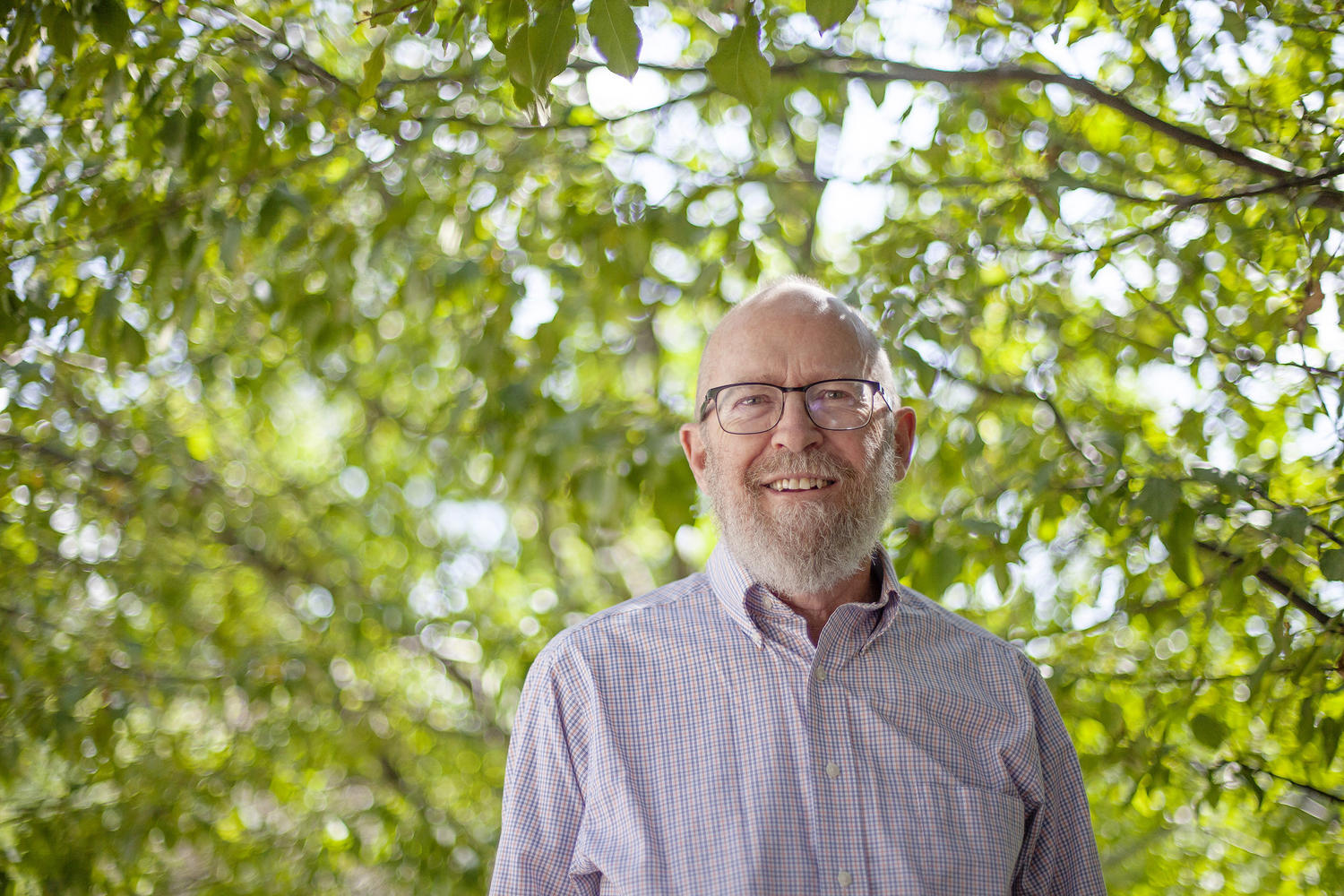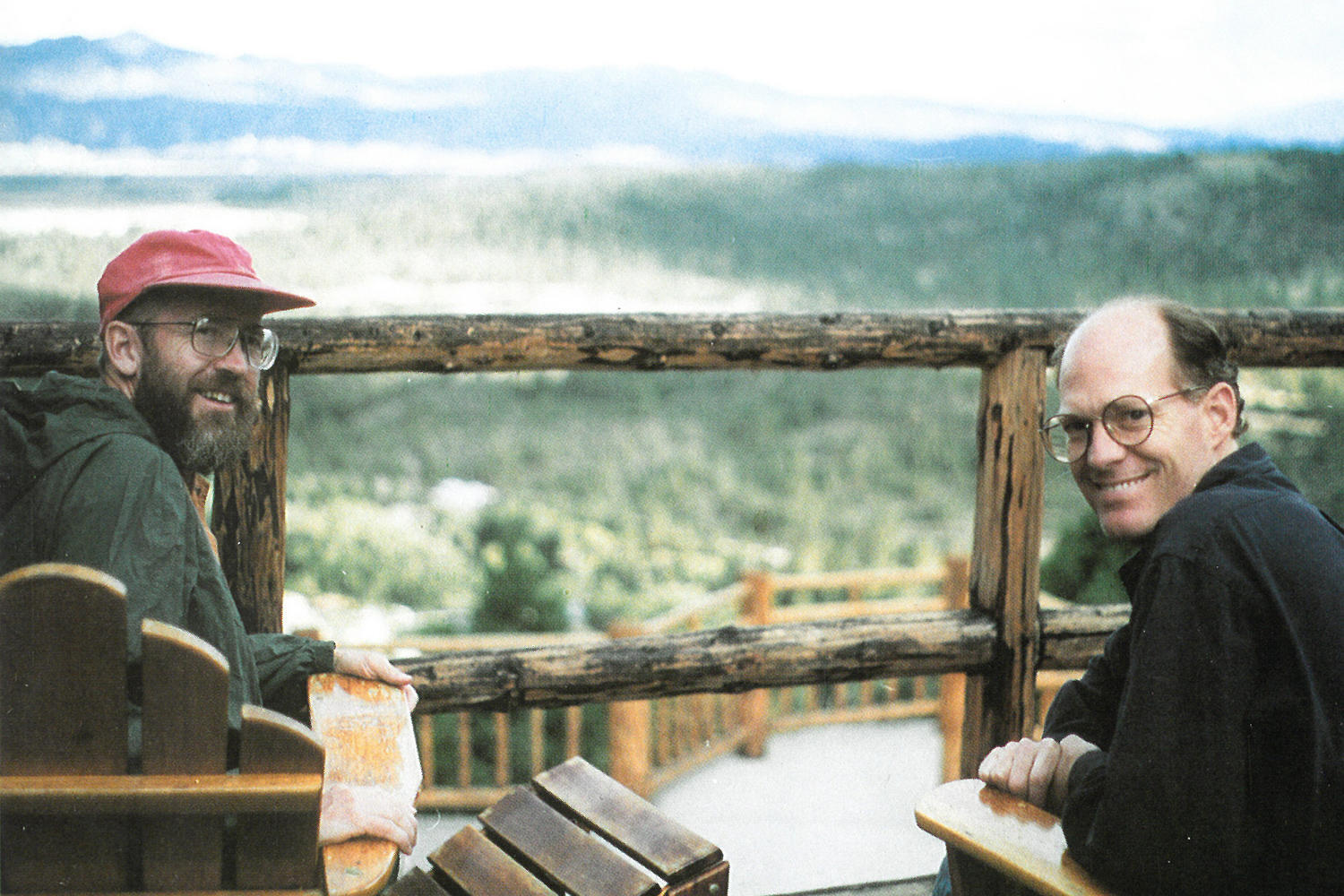
Two decades after graduating from The Colorado Springs School, Shannon O’Keefe remembers the impact her Upper School Science Teacher Sam Johnson had on her.
“We’d go on these Experience-Centered Seminars, and he would see a roadcut, somewhere a road had been cut into a hillside. We’d pull over and 15 of us would pile out of a van on the side of some random road in Utah or Arizona and examine the rock in this roadcut. We were doing geology,” said O’Keefe, an emergency physician in Salt Lake City. “I still think about that when I see a roadcut. I feel like I’ve thought about it so many times.”
That kind of lasting effect on students and how Johnson championed hands-on learning during his 25-year career at CSS is why he is the 2019 Founders’ Day Hall of Fame honoree. Johnson, who retired in 2016, is being inducted into the school’s Hall of Fame during a ceremony Friday, September 20, at 11:00 a.m. in the Louisa Performing Arts Center.
Even now there’s rarely a day that passes without Johnson reflecting on his time at CSS.
“The best thing was coming here every day,” he said. “They were the best years of my life.”
Johnson’s interests span beyond science. He’s a composer, musician, author, and poet. He would compose songs about photosynthesis and write poems about natural phenomena to entertain students.
“When I was a kid, my goal was to be a renaissance man. I didn’t care about all of these high specializations. I just wanted to know everything,” he said. “When I went to college, they asked me what my major was going to be. I said, ‘Surely you jest. Why do I have to choose a major?’ I majored in biology, but I wanted to do everything.”
On campus Johnson was affectionately known as the “moth man,” and his popularized moth song has been sung many times by Upper School students on Mountain Caravan. He also gifted the school its alma mater during the 50th-anniversary celebration in 2012.
Johnson says he became a teacher by “complete accident.” After earning a bachelor of science in biology from the College of Racine, formerly known as the Dominican College, he worked as an orderly at a state hospital in Austin, Texas.
He began rearing caterpillar larvae by the hundreds. It attracted the attention of his neighbor, who mentioned that a small private school had an opening for a biology teacher. Not for me, Johnson told him. “But look at you, look what you do with these caterpillars,” his neighbor replied.
“I had to say, ‘They’re larvae,’ but anyway,” Johnson said. After a few days of his neighbor’s pleas, Johnson agreed to fill-in temporarily until the school found a teacher.
“About two weeks in, I realized it was amazing,” he said. He was fascinated how he could pose questions and set up experiments where students observe and ask their own questions because “that’s where learning starts.”
Johnson taught for 14 years at two private schools in Austin and two colleges in Chicago before joining CSS in 1991. He was drawn early on to experiential education, believing students need “to do” learning to better retain it.
When he wanted to create a thermal gradient, cold on one end and hot on the other, to measure outcomes such as if plants do better at certain temperatures, he asked student Tye Tutt for help. They built a thermal gradient, then co-wrote a paper about it for a science magazine.
“Going into college I had already learned how to do scientific research and how to document it, and that didn’t just happen,” said Tutt, a civil engineer in Colorado Springs. “It was the inspiration of Sam Johnson and his passion for learning and teaching. You learn all this stuff in the classroom and want to know how it actually applies to real life. Sam was great at making that connection for me.”
Tutt, who earned a bachelor of science in civil engineering and a master of science in civil and environmental engineering from Carnegie Mellon University, appreciated that Johnson wouldn’t hesitate to be silly in front of a class.
“He’s a pretty even-keeled guy, but one day he was teaching us about energy associated with different wavelengths when he started dancing around the room. He started slow and lethargic, then increased his energy. He was dancing so much we thought he would have a heart attack,” Tutt said. “To this day I remember wavelengths of energy.”
Both Tutt ‘08 and O’Keefe ‘98 recalled Johnson’s love of moths and butterflies and his eagerness to share it with others.
“He would go on and on about what he was passionate about,” said O’Keefe, who earned a bachelor of arts in biology from Carleton College and a medical degree from the University of Vermont College of Medicine. “He always encouraged us to be curious and be true to who we were. He led by example.”

Johnson wanted his students to experience nature because it was his first classroom. He grew up in Colorado Springs on Star Ranch, a Younglife summer camp, where his father was a caretaker. Lonely when campers weren’t there, Johnson found comfort in music — he would fall asleep listening to his dad’s classical records — and the outdoors.
“After a long winter, you could go out in the woods and hear a Steller’s jay from like a mile away because it was so quiet,” he said. “Nature was all around me all the time. That was my main instruction in life. When I was a little tiny kid, I would toddle around between the hollyhocks and see if I could find bumblebees and try to catch them in a jar.”
Johnson also connected with children who attended The Colorado Springs School’s summer program, now called Full STEAM Ahead, which offers experiential education and project-based learning to area middle schoolers.
“When he was a 6th grade teacher in the program, he’d take kids out to the field, and some of them had never been hiking in a field. He introduced the magic of nature to these kids who were very urbanized, and they absolutely adored him,” said Amy Johnson-Smith, Full STEAM Ahead director and Upper School English teacher.
Johnson, who earned a master of arts in ecology from the University of Colorado at Denver, also held positions as Head of the Upper School and director of the Experience-Centered Seminar program. He’s credited for helping bring fire to campus in the way of the first Great Iron Pour ECS. His students excelled on the Advanced Placement Biology and Chemistry exams, known as two of the toughest APs.
Greg Johnson, Upper School Science and Math teacher, counts himself among his colleague’s students because of all he learned from him. They worked together for 25 years.
“His intellectual motivation has always been the simple pleasure of discovery,” he said. “Sam’s ability to impart the pleasure of discovery among his students has always been a wonder to behold, whether in biology, chemistry, or geology classes.”
Since retiring, Johnson spends his time writing, composing music, and identifying moths and butterflies in the scientific community. He also leads BioBlitzes, an intense period of biological surveying in an attempt to record all the living species within a specific area.
Nature is always with him. He pauses during a conversation to identify a screech in the distance as that of a red-tailed hawk and readily identifies the species of trees that dot the CSS campus, where he spent so many of his days.
“It’s just a marvel to me that I was in this position,” Johnson said. “I feel incredibly lucky to have been at CSS.”
None of the three Johnsons quoted in this piece are related.



